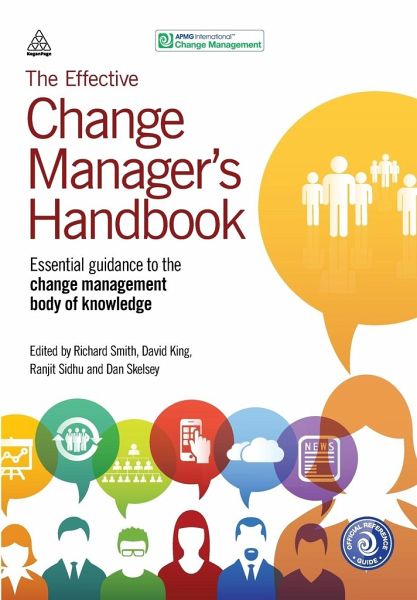
The Effective Change Manager's Handbook
Essential Guidance to the Change Management Body of Knowledge
Herausgeber: Smith, Richard; Skelsey, Dan; Sidhu, Ranjit; King, David

PAYBACK Punkte
23 °P sammeln!
Define and practice change management more successfully with this official guide to the Change Management Body of Knowledge, complete with practical tools, underpinning theory and best practice.




